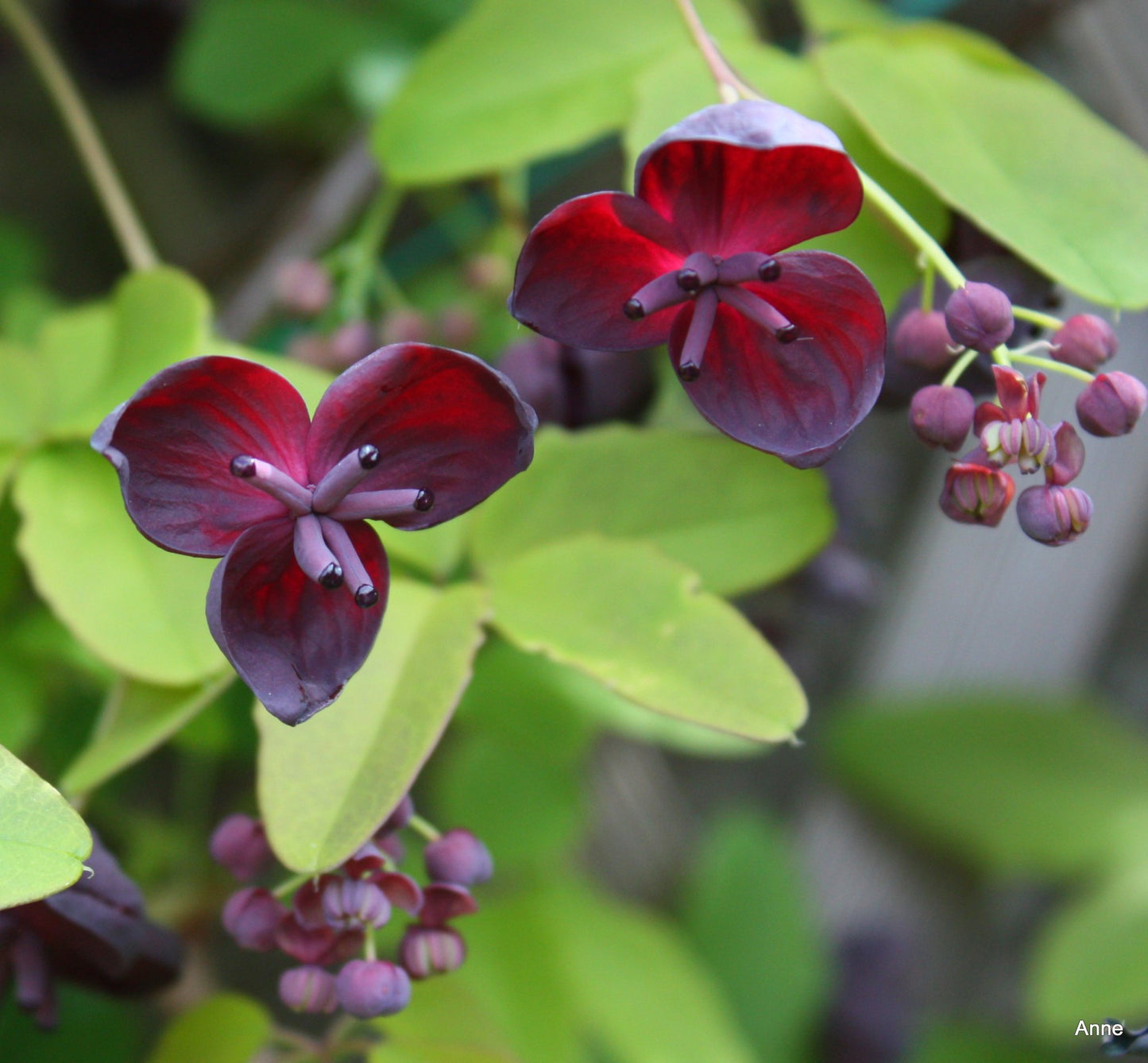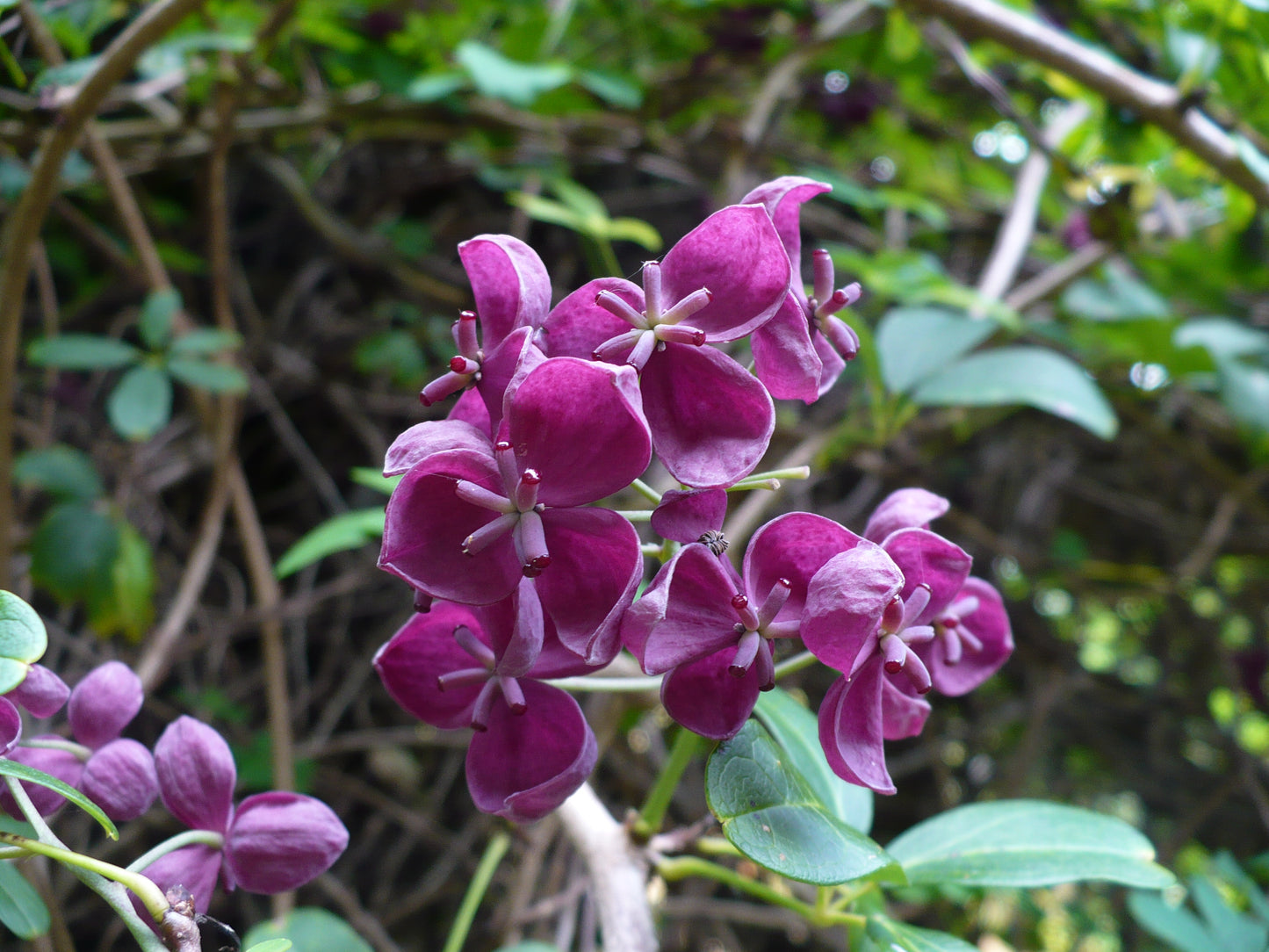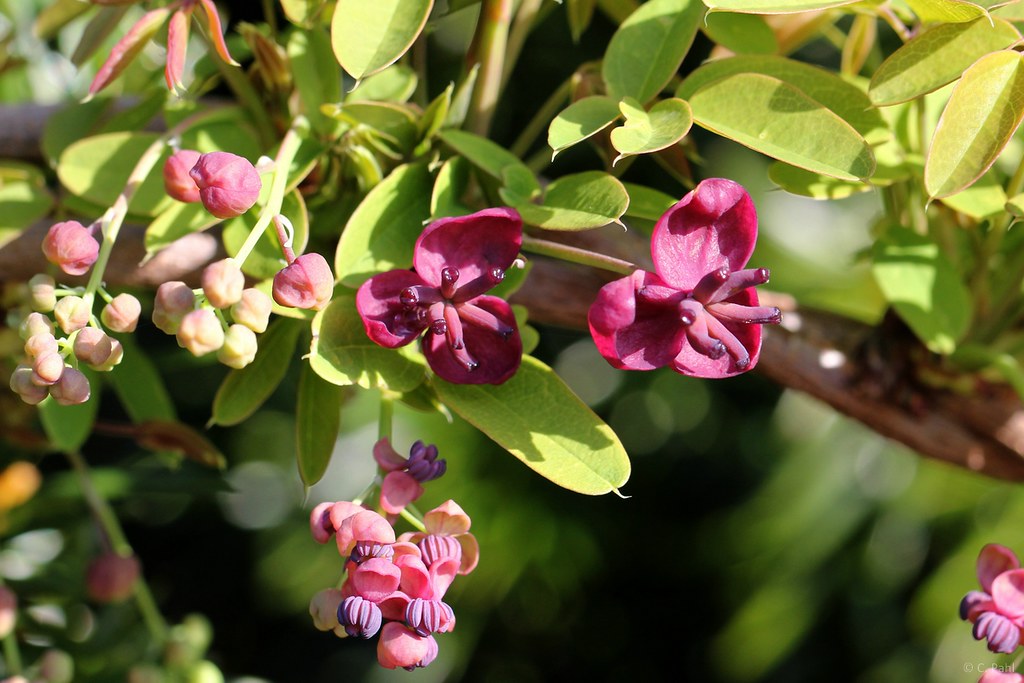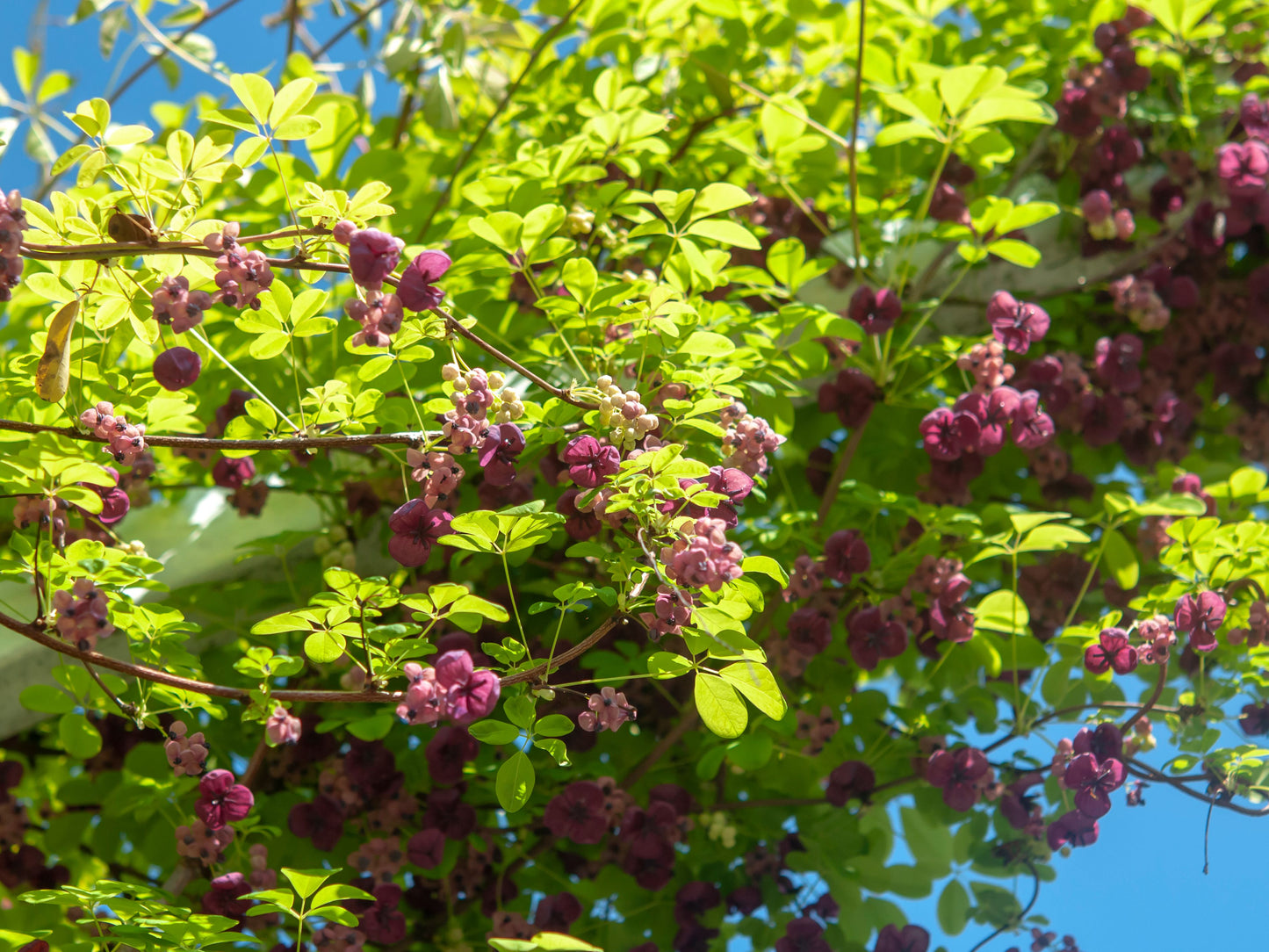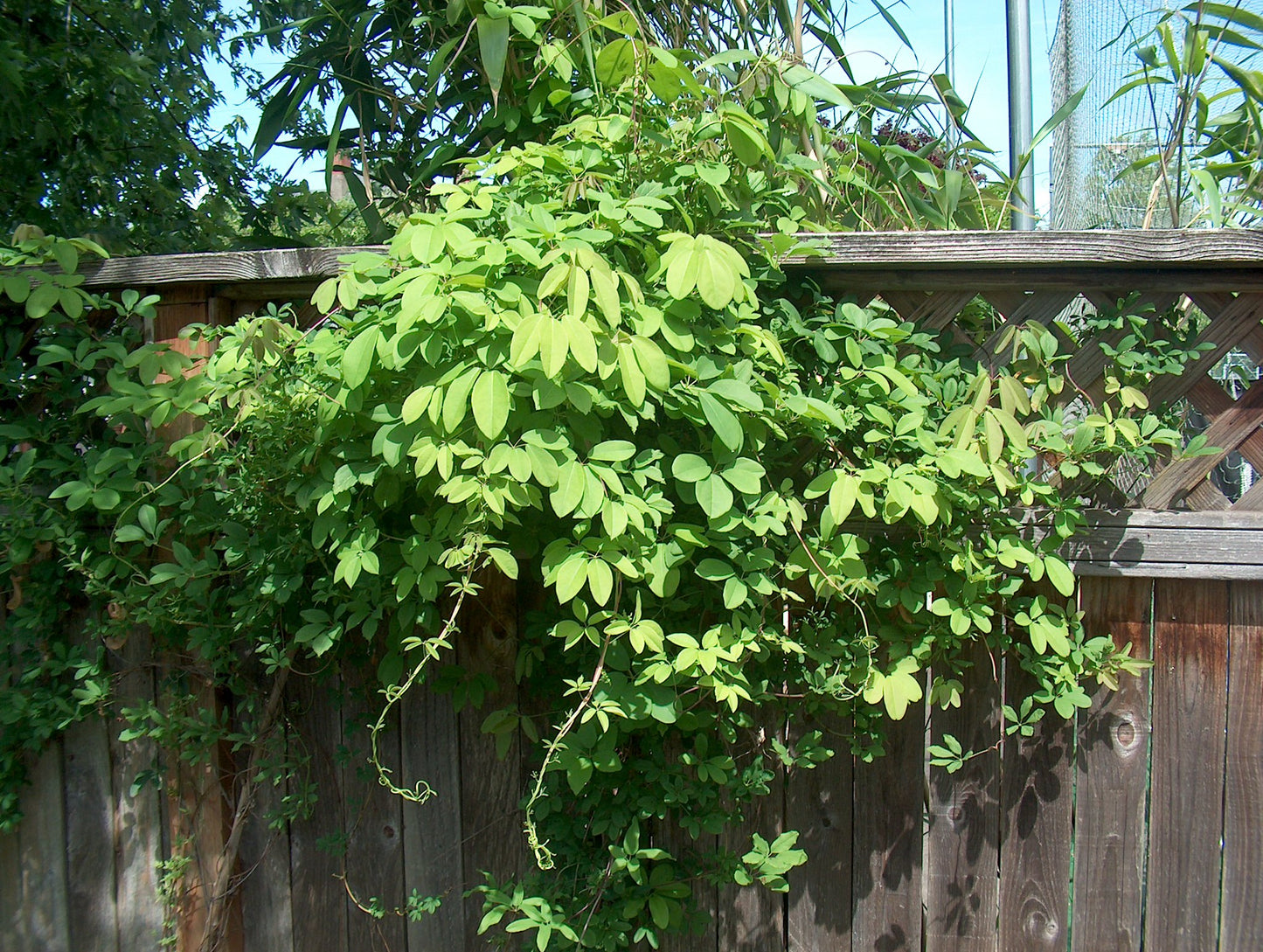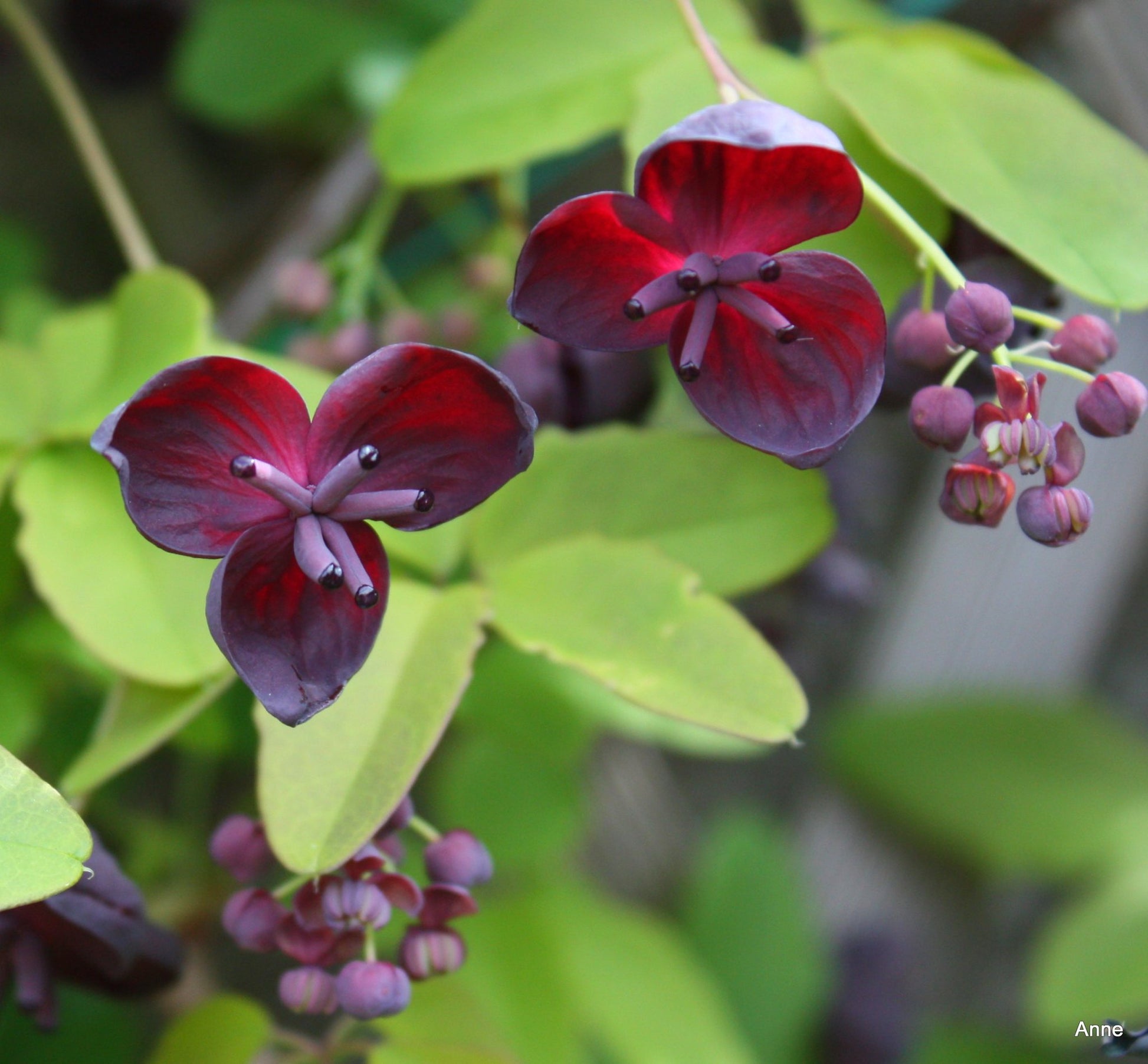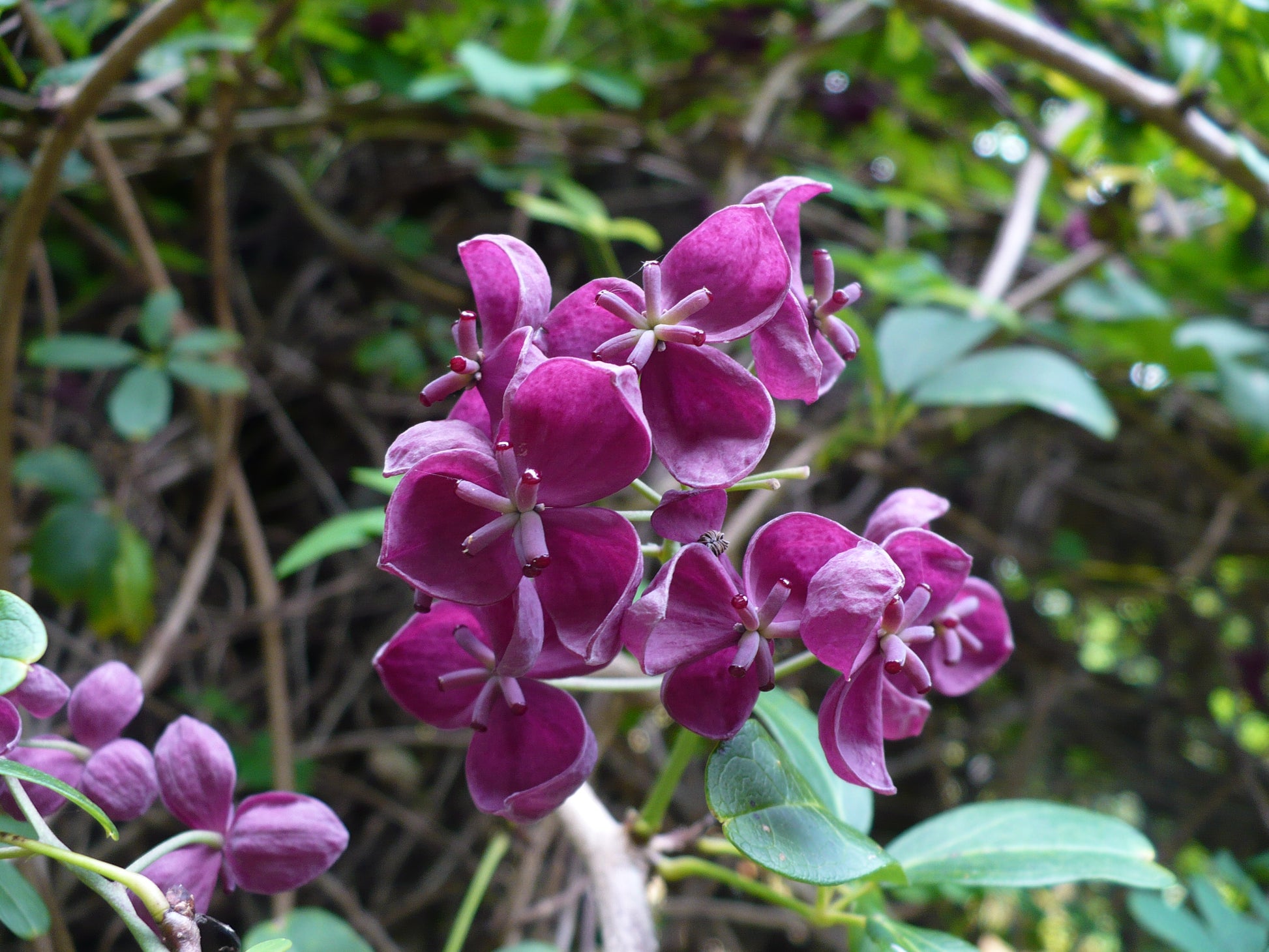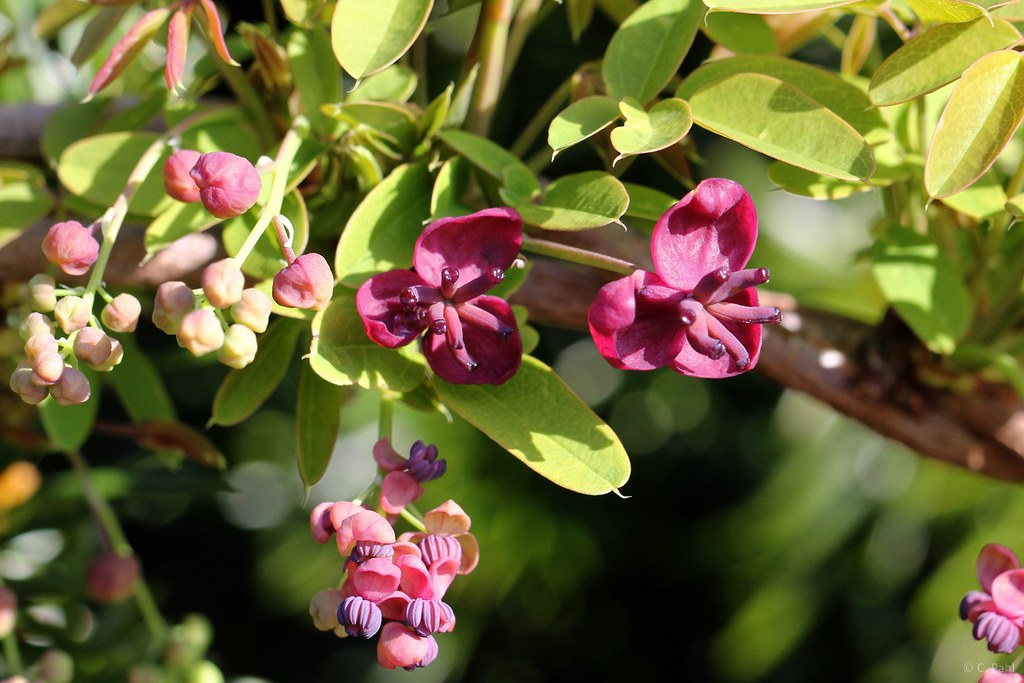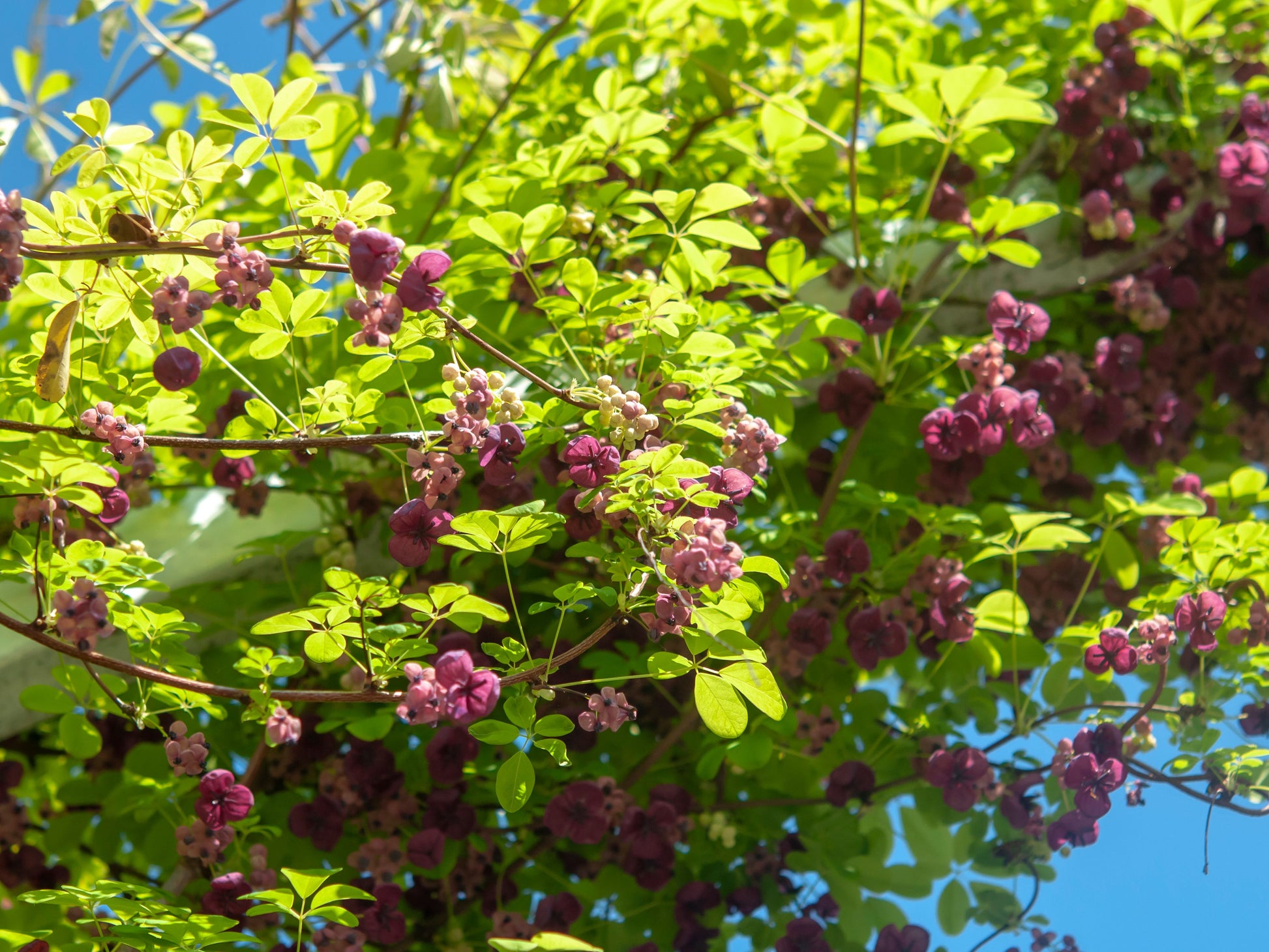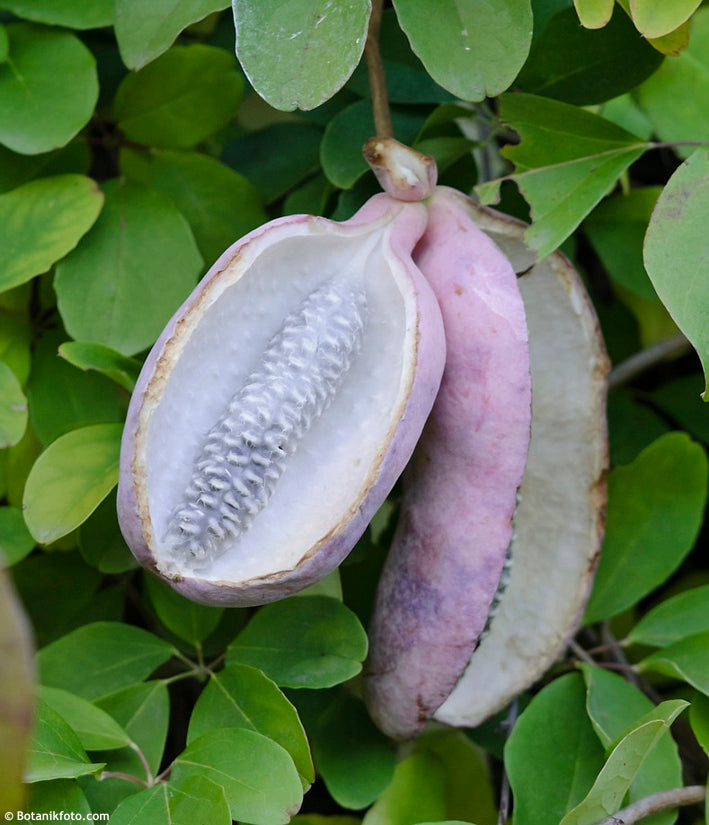Floridaseeds
Chocolate Vine Akebia quinata 20 Seeds USA Company
Chocolate Vine Akebia quinata 20 Seeds USA Company
Couldn't load pickup availability
Akebia quinata, commonly known as chocolate vine, five-leaf akebia, or five-leaf chocolate vine, is a deciduous climbing vine native to East Asia, particularly China, Korea, and Japan. Like its relative Akebia trifoliata, it is widely cultivated in temperate regions worldwide as an ornamental plant for its attractive foliage, unique flowers, and edible fruits.
The leaves of Akebia quinata are compound and composed of five leaflets, arranged in a palmate pattern. The leaflets are typically oval to heart-shaped and have serrated edges. The foliage provides a lush backdrop for the vine's other features and turns shades of yellow and bronze in the fall before dropping.
The flowers of Akebia quinata are similar to those of Akebia trifoliata, appearing in pendulous clusters in early spring before the leaves emerge. They are purplish-brown to reddish-brown in color and have a sweet, spicy fragrance reminiscent of chocolate, hence the common name "chocolate vine." The flowers are attractive to pollinators like bees and butterflies.
After flowering, Akebia quinata produces elongated, sausage-shaped fruits that are initially green but turn purplish-black as they ripen. These fruits are edible, with a sweet, slightly tart flavor. They are sometimes used in culinary applications, such as jams, jellies, and desserts.
As a climbing vine, Akebia quinata requires support to grow, such as trellises, arbors, or fences. It is relatively easy to grow and can tolerate a variety of soil types and light conditions, although it prefers well-draining soil and partial shade to full sun. Hardy in zones 4-9.
Growing Instructions for the Chocolate Vine
The seeds need to be planted when received or stored in a refrigerator until they are planted. The seeds have a period of dormancy. They can be planted outdoors in the fall or winter for spring germination or they can be cold stratified to simulate winter conditions and to break their dormancy at any time of the year. 1. Soak the seeds in water for 24 hours. 2. Put the seeds in a ziplock bag. 3. Put the bag in the refrigerator and leave it there for 30 days. 4. The seeds like moist, well-drained soil. Use a sterile seed starter mix, if available. It prevents soil fungi from damaging the seeds and the seedlings. If not available, then make a mixture of half potting soil and half sand, perlite or vermiculite. Put the soil in a pot. 5. Sow the seeds 1/16 of an inch deep. 6. Water the soil so that it is moist but not wet. 7. When the seedlings are a few inches tall, they can be transplanted.
Materials
Materials
Shipping & Returns
Shipping & Returns
Dimensions
Dimensions
Care Instructions
Care Instructions
Share
